Our history
1950s
The Australian Elizabethan Theatre Trust (AETT) initiates the idea of a national theatre training school.
1958
NIDA is founded as the first professional theatre training school in Australia, being originally established in the grounds of the University of New South Wales with the support of then Vice-Chancellor (later Sir) Philip Baxter.
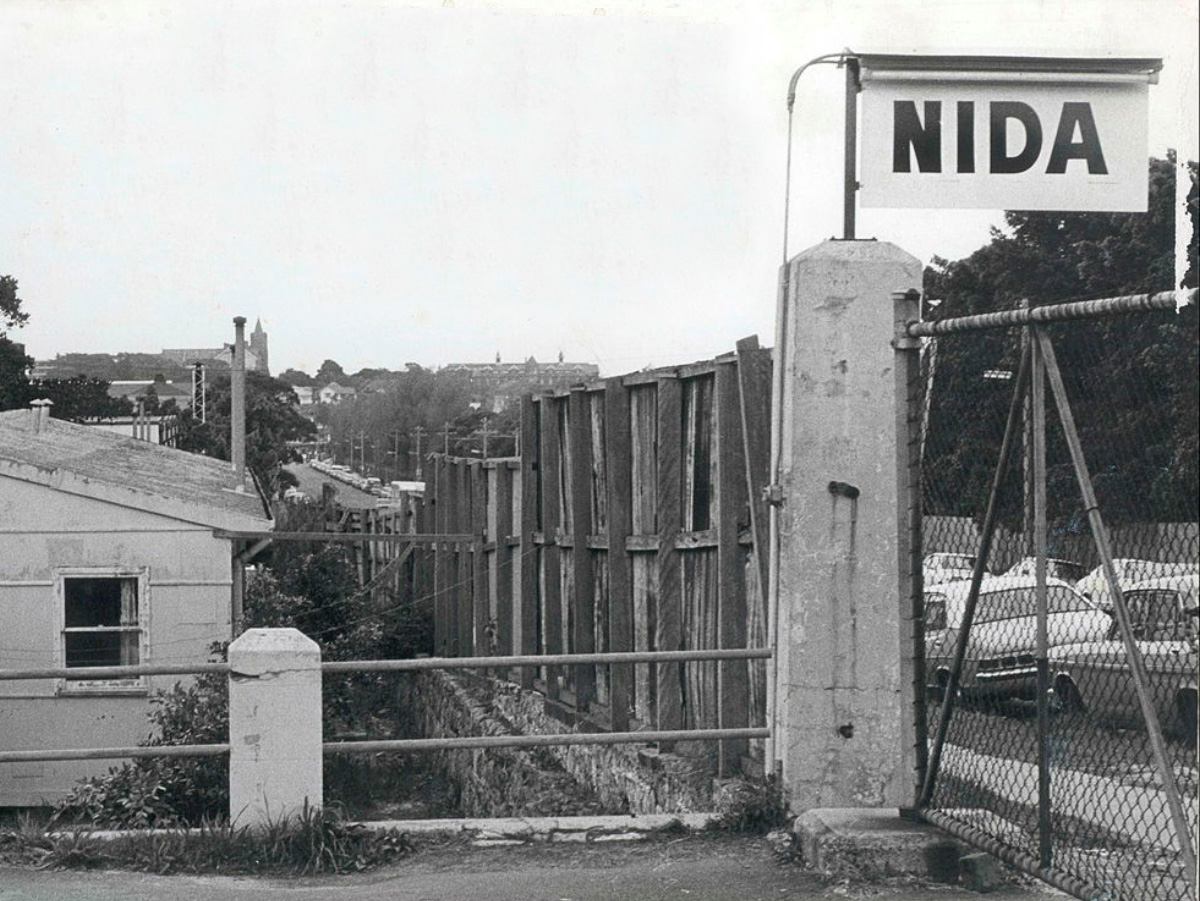
1959
Robert Quentin, later Professor of Drama at UNSW, is appointed the inaugural Director.
NIDA opens with a two-year course in Acting.
1960
The first 23 students graduate with a Diploma in Acting.
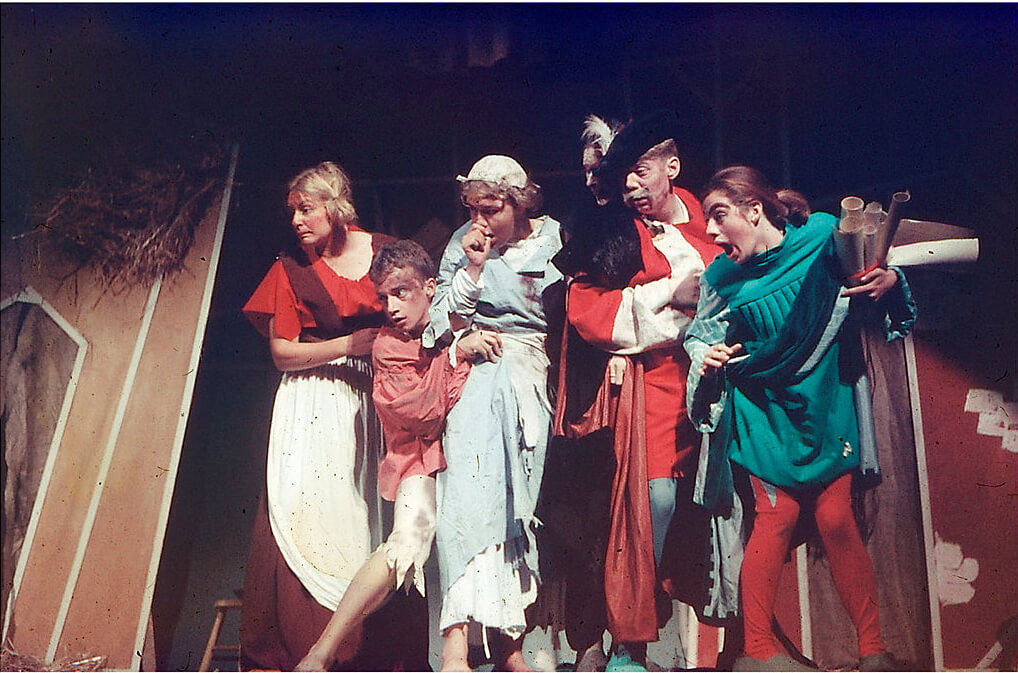
Gammer Gurton's Needle, 1960 (First year production)
1961
A two-year Production course is added to NIDA’s offerings.
1962
UNSW converts an old army hut into The Old Tote Theatre on behalf of NIDA, to house student productions and early Old Tote Theatre productions.
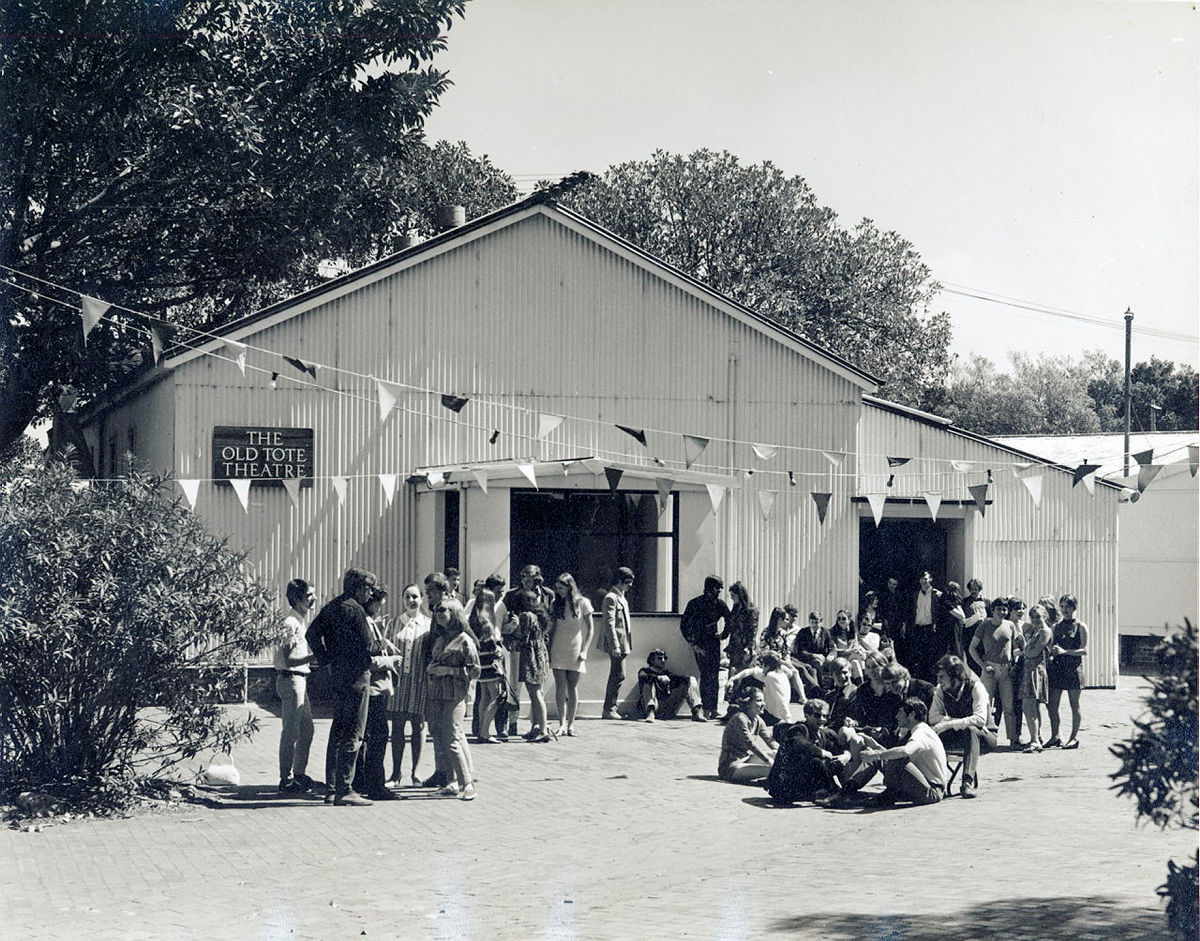
The Old Tote Theatre was used by NIDA and the Old Tote Theatre Company from 1963. In 1969 the theatre was renamed the NIDA Theatre.<
1963
NIDA establishes the Old Tote Theatre Company and provides opportunities for NIDA students to work with a professional theatre company.
1966
NIDA establishes the Jane Street Season of Australian and classical plays in association with the NIDA Advanced Course, staged in a converted former church hall in Randwick.
1969
The Old Tote Theatre becomes an independent organisation based at the Parade Theatre at UNSW.
A lecture theatre on the UNSW Western Campus is converted to a proscenium-arch theatre, the original Parade Theatre, to house the Old Tote Theatre Company until 1978.
1972
Both the Acting and Production courses become three-year courses.
A three-year Design course and a one-year graduate course in Directing are introduced.
1973
The Old Tote Theatre Company becomes the resident theatre company at the Sydney Opera House and Parade Theatre, until 1978.
1975
NSW Government established the Sydney Theatre Company and NIDA is the curator and manager of the inaugural season of STC.
1980s
NIDA begins to use the Parade Theatre for student productions until 1999.
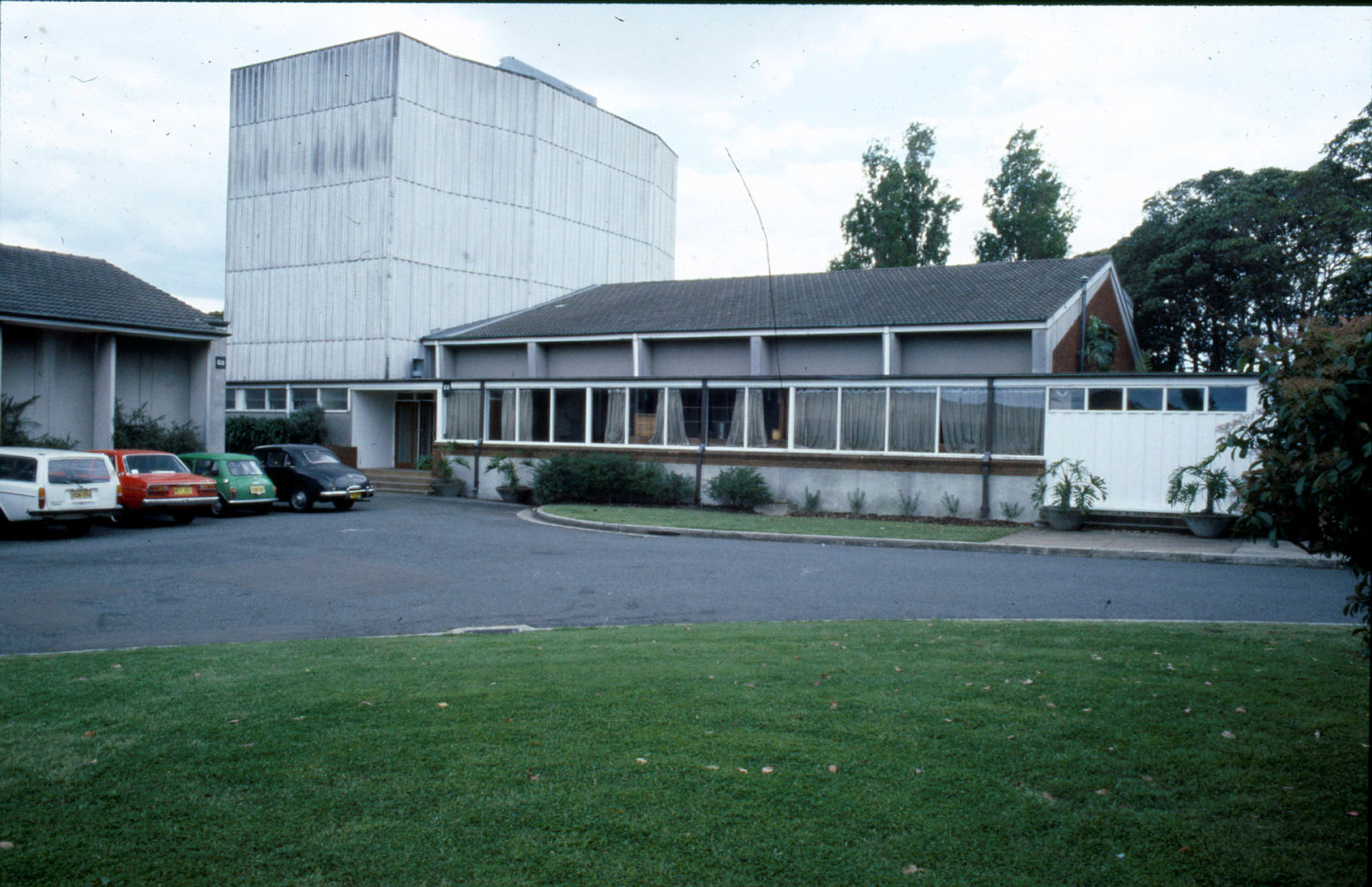
Parade Theatre, vacated by the Old Tote Theatre at the end of 1978. It was used by NIDA and UNSW drama students from 1979. In 1983 NIDA was given primary use of the theatre, prior to moving to the site in 1988, following the construction of the Stage I building project. The Parade Theatre was demolished in 1999.
1980
The final season is held at the Jane Street Theatre, although two Jane Street productions are staged in the Parade Theatre in 1982.
1987
The Old Tote Theatre is returned to the UNSW and renamed the Fig Tree Theatre.
1988
NIDA formally moves to the new purpose built administration, teaching and workshop buildings at 215 Anzac Parade, Kensington, Sydney. The Stage 1 complex was designed by Peter Armstrong.
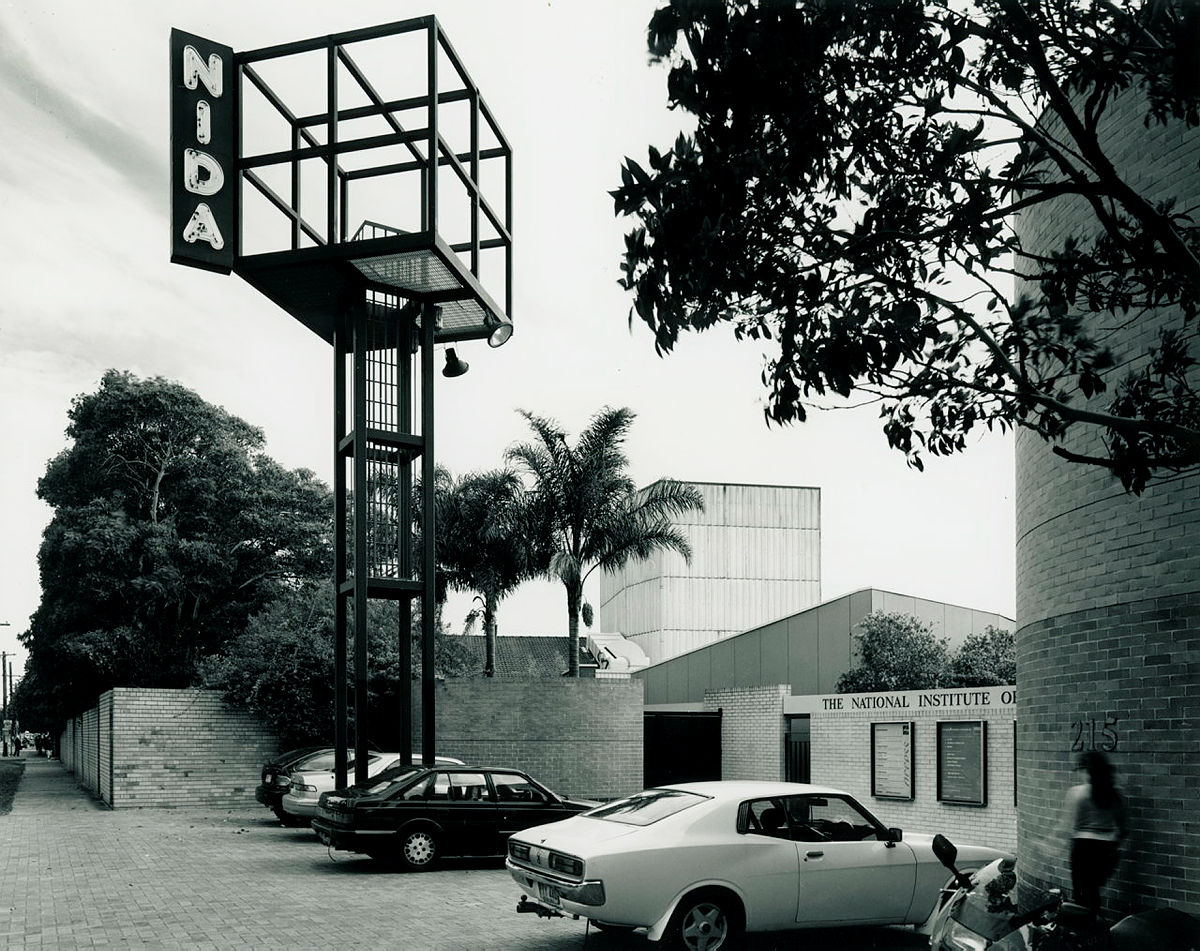
The NIDA Exterior in 1988
1990
A two-year Associate Diploma Course in Theatre Crafts (specialising in either scenery, properties and costume) is introduced.
Arising from the NIDA Advanced Course, the NIDA Company is established with the object of providing artistic opportunities for actors, playwrights, directors, composers and designers who are already working in the industry.
Performances were given in the NIDA Theatre until 2007.
The NIDA Open program begins with a Summer School.
NIDA Company formed - professional company performs 1-2 productions yearly until 2007
1994
The Bachelor of Dramatic Art replaces the Diploma of Dramatic Art for students of Acting, Technical Production and Design.
1999
The Parade Theatre is demolished and rebuilt as a 730-seat horseshoe theatre.
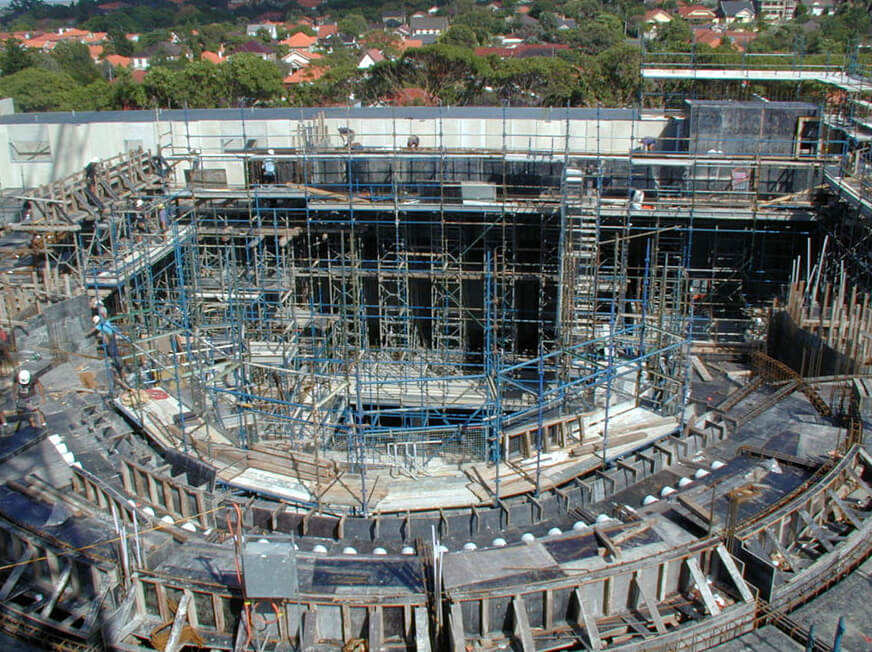
Stage Two Construction of the Parade Theatre, 2001
2001
The Bachelor of Dramatic Art in Production Crafts replaces the Associate Diploma in Theatre Crafts
The Advanced Diploma of Dramatic Art in Scenery Construction is introduced
The Stage II Buildings are opened on 26 October, funded by a Federation Fund Grant of $25 million from the Federal Government as well as generous donations from Mel Gibson, James Fairfax AO and Ben Gannon, and bolstered by financial support from the NIDA Foundation.
The Stage II complex receive the Sir John Sulman Award for Public Buildings from the NSW Chapter of the Royal Australian Institute of Architects.
2002
On April 23, NIDA Graduate Mel Gibson AO opens the NIDA complex which features five world-class theatres, including the new Parade Theatre.
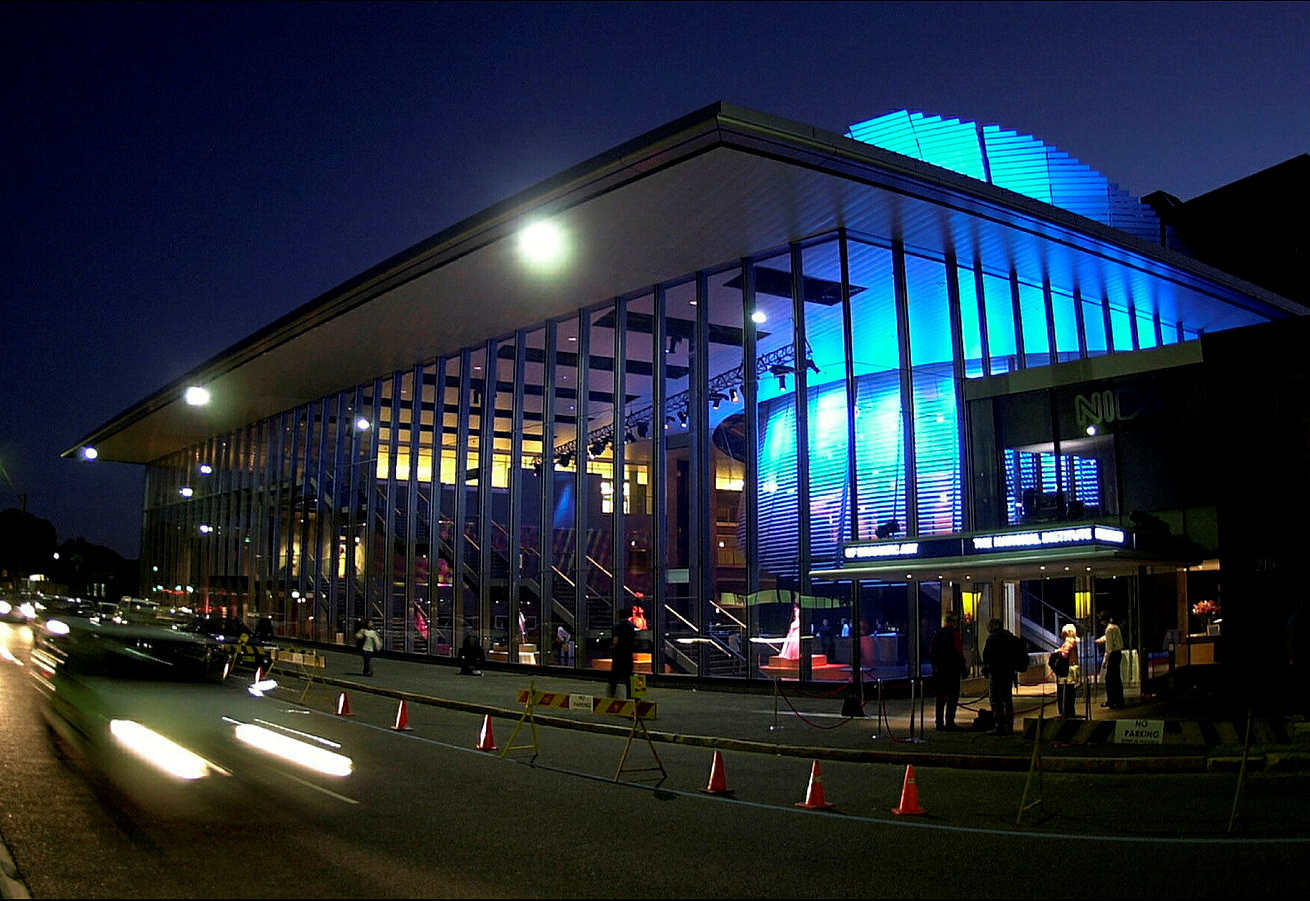
The new NIDA Building, 2001
The first production in the new Parade Theatre opens on 17 July. Country Music is the Australian premiere of a new play by Nick Enright workshopped with the graduating students and directed by Tony Knight and Julia Cotton, with music composed by Wei Han Liao.
2004
A one-year Master of Dramatic Art in three streams - Voice Studies, Movement Studies and Directing receives accreditation.
2005
The Bachelor of Dramatic Art in Production replaces the Bachelor of Dramatic Art in Technical Production.
2006
A Playwriting stream is accredited for the one-year Master of Dramatic Art.
2009
The Bachelor of Dramatic Art in Costume and Bachelor of Dramatic Art in Properties replaces the Bachelor of Art in Production Crafts.
2013
A Master of Fine Arts in Directing and Master in Fine Arts in Writing for Performance replace the Graduate Diplomas in Directing and Playwriting.
2014
NIDA has its first intake (retrospective) of students in Bachelor of Fine Arts in the following streams: Acting, Design for Performance, Properties and Objects, Costume, Staging, Technical Theatre and Stage Management.
Vocational Studies Courses commence at NIDA.
2015
The Graduate School is officially opened by The Hon. Malcolm Turnbull, MP Prime Minister of Australia and Mel Gibson AO on December 6. It was built by Hassell Architects, who collaborated with the original architect Ken Maher to create two new levels above the Stage II complex, which complement Ken’s Sulman award-winning design.
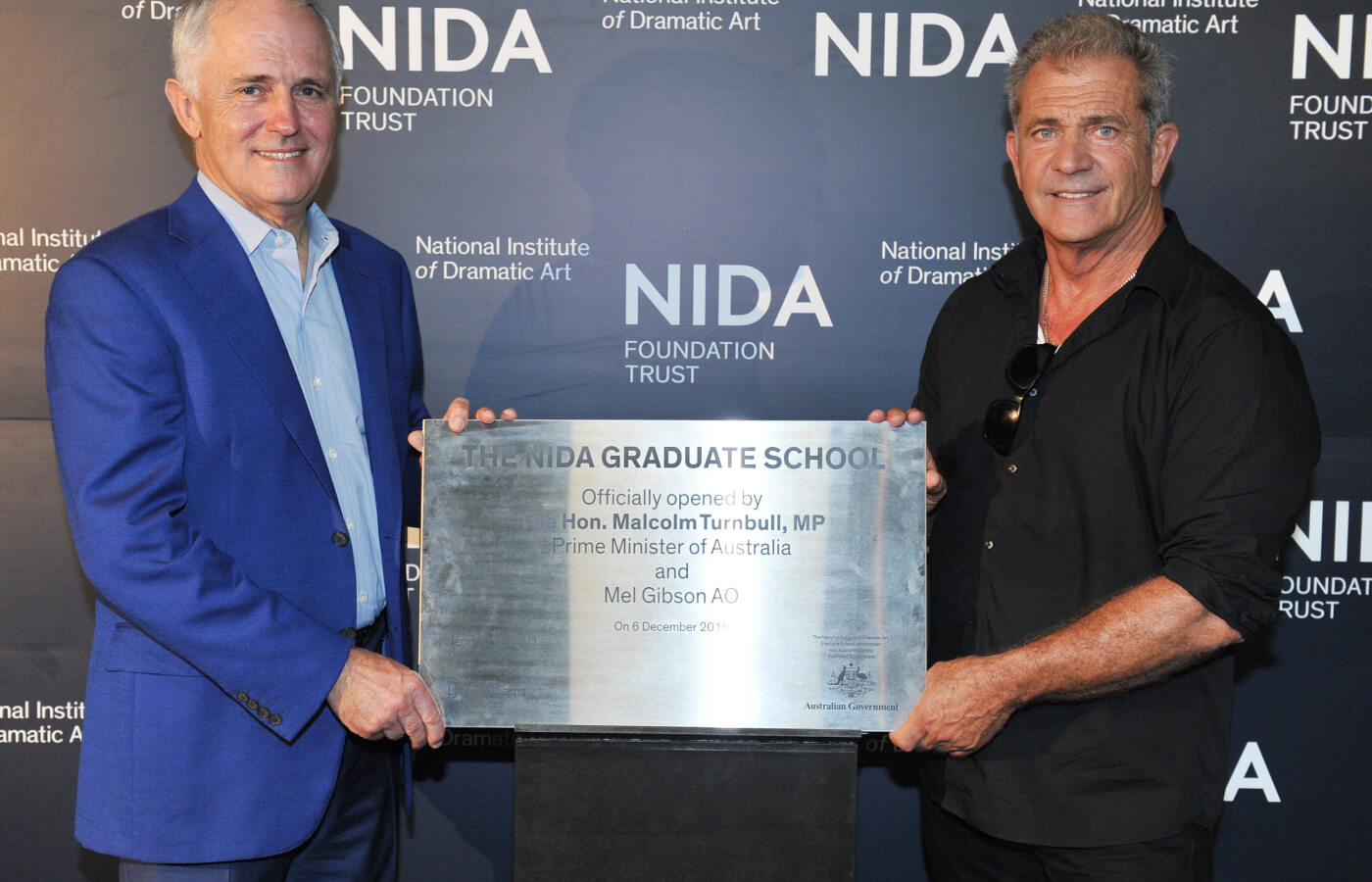
Former Prime Minister The Hon Malcolm Turnball Mp & Mel Gibson AO at the NIDA Graduate School Opening Sunday 6th December, 2015
2016
NIDA introduces Master of Fine Arts in Design for Performance, Voice, and Cultural Leadership.


